Everything about Interpretation
No confusing jargon: discover how interpretation is carried out, explained simply.
Translation? Interpretation? Simultaneous?
¿Consecutive?
Everything you need to know to deliver your message to your audience in any language.
Whether you have experience organizing multilingual events or it's your first time having a guest who doesn't speak Spanish, you've probably heard terms like "translation" or "interpretation" before. They may seem the same, but it's always better to know which is the best option for your event so you can make the most of your message.
If you are looking to understand this world a bit to make the best decision, here we explain the possibilities so you can evaluate for yourself what fits best with what you want to achieve.
What is interpretation? Types and uses:
Did you know that interpretation and translation are two very different things?
You should know that the main difference is that interpretation conveys messages through voice or signs, while the translator does so through written language.
In this regard, we could define interpretation as the process of conveying a message from one language to another through speech or signs.
Now, there are different types of interpretation. As a practice that can be used in more than one context, there are various types of interpretation that you should also be familiar with, as the cost is not the same for everyone and it can influence how your message is conveyed.
The main types are
CONSECUTIVE INTERPRETATION:
In this mode, the interpreter must first listen to a segment lasting between three seconds to three minutes, and then interpret directly to the audience. It is more common in larger audiences, events, or mass talks (where simultaneous technology cannot be implemented). To carry it out, the interpreter must apply note-taking techniques and idea linking, as it requires a significant amount of memory work to keep the message true to the original. (Latency x2)
LIAISON INTERPRETATION:
It is a branch of consecutive interpretation and, as its name indicates, requires interpreters to become a link between participants, interpreting in both languages as needed. Generally, liaison interpretation is used to communicate messages between two individuals, an individual and a small group, or two small groups. It differs from consecutive interpretation due to its bidirectional nature and because it does not require note-taking, as the interpreter can usually request pauses with more freedom.
SIMULTANEOUS INTERPRETATION:
It is the one that takes place in real time. The translator listens to the message through headphones and speaks into a microphone at the same time as the speaker in the target language. It requires a great effort of concentration and mental capacity, so it is necessary to have a relay translator every 15 minutes. A variation of this modality is whisper interpretation, in which the interpreter sits next to the person requiring the service and whispers the message to them. (Latency +3 seconds)
In-person, remote, or hybrid interpretation? Here we explain the difference.
In-Person Mode:
The traditional method of simultaneous interpretation for events; the old reliable. The interpreter sits in a booth at the event location, listens to the speaker through the sound system, and transmits the translation via a microphone to a radio frequency transmitter. The receivers, distributed among the audience before the event, receive the message, ensuring effective communication at multilingual events.

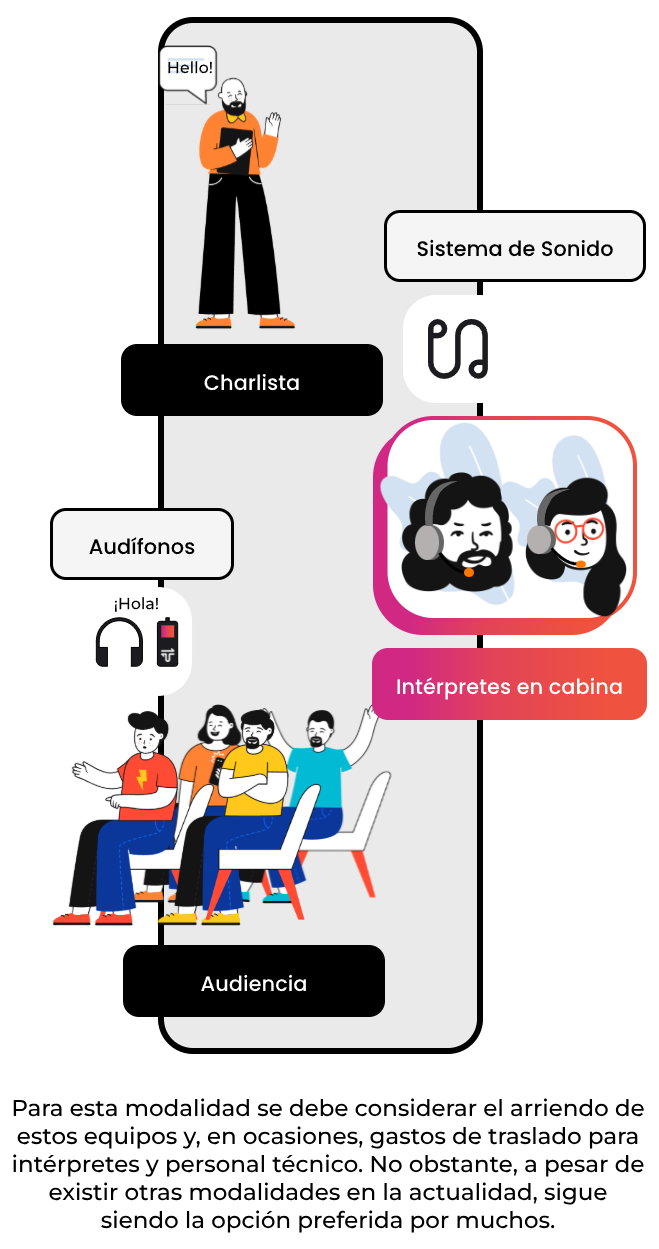


Remote Mode:
This modality experienced a boom during the pandemic, becoming a key solution for intercultural communication in a quarantined world. It is based on videoconferencing platforms like Zoom, Webex, Cisco Teams, etc., bringing together speakers, participants, and interpreters on a single platform. This allows everyone to choose their language with a simple click. Nowadays, many companies and institutions prefer it due to its low cost, ease of implementation, and convenience for quick meetings without logistical complications.

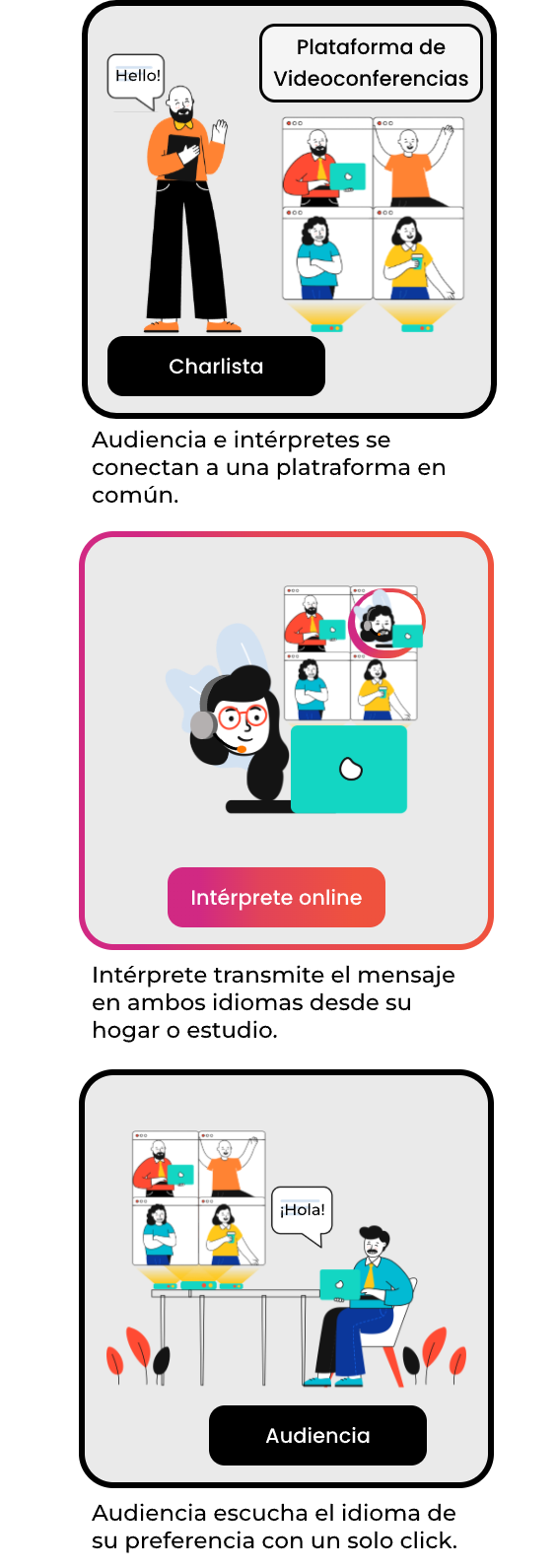


Hybrid Mode:
The best of both worlds. This format combines in-person events with the ability to connect remote participants in case of logistical unforeseen circumstances. Unlike fully in-person events, interpretation booths are not required. It is an ideal solution to reduce travel and accommodation costs for speakers, interpreters, and guests, while the in-person audience can interact virtually with other participants.

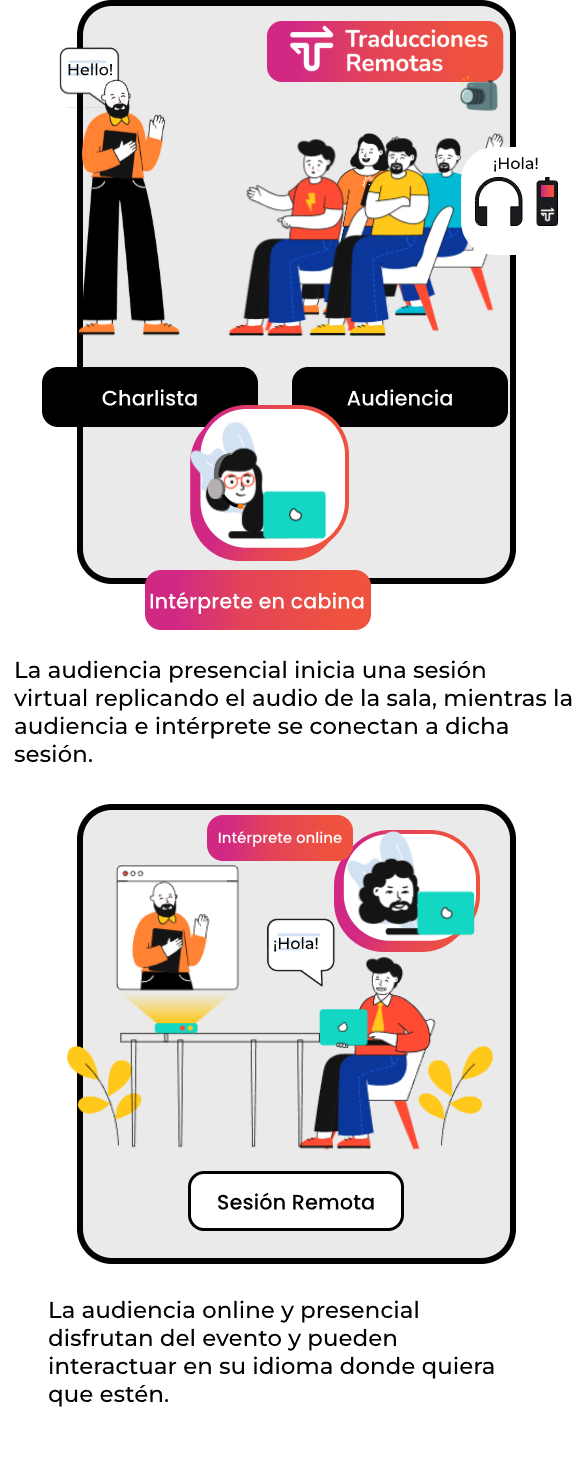


What you need to add simultaneous interpretation to your event
We want to help you choose the best option for your event, so we created this table to show you what you need for each modality, and if it is compatible with the different services you might require. (spoiler alert: it´s always possible 😉).
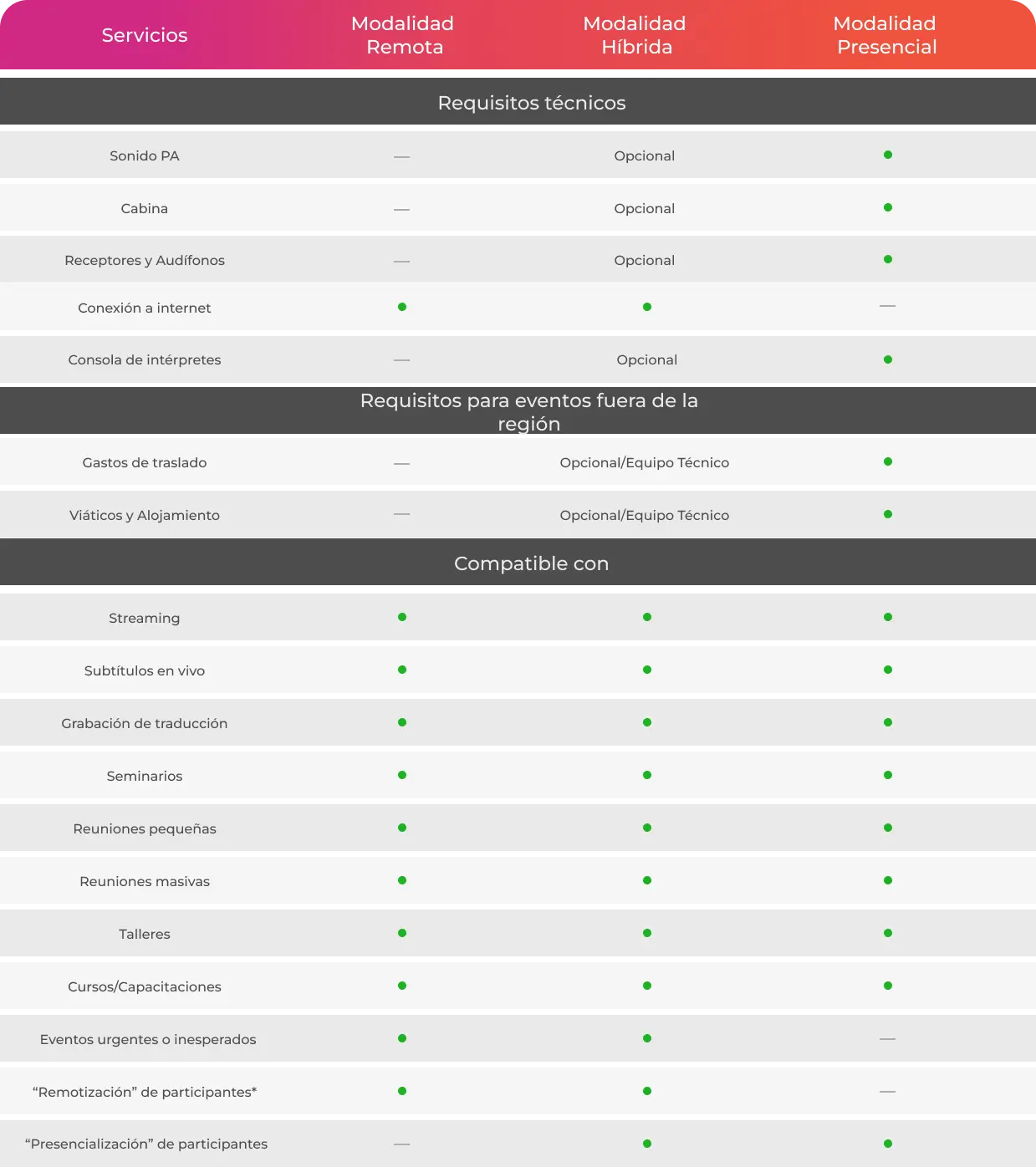
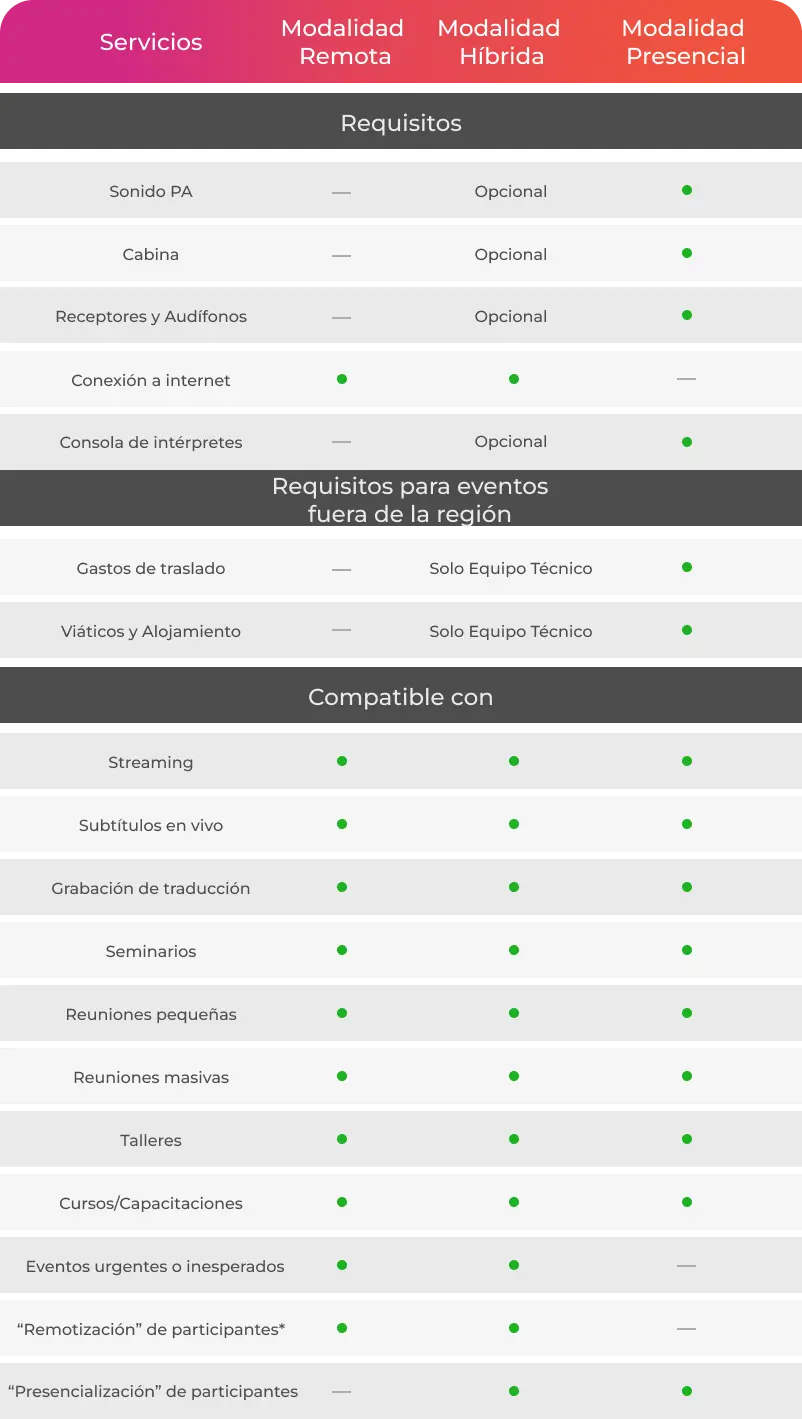
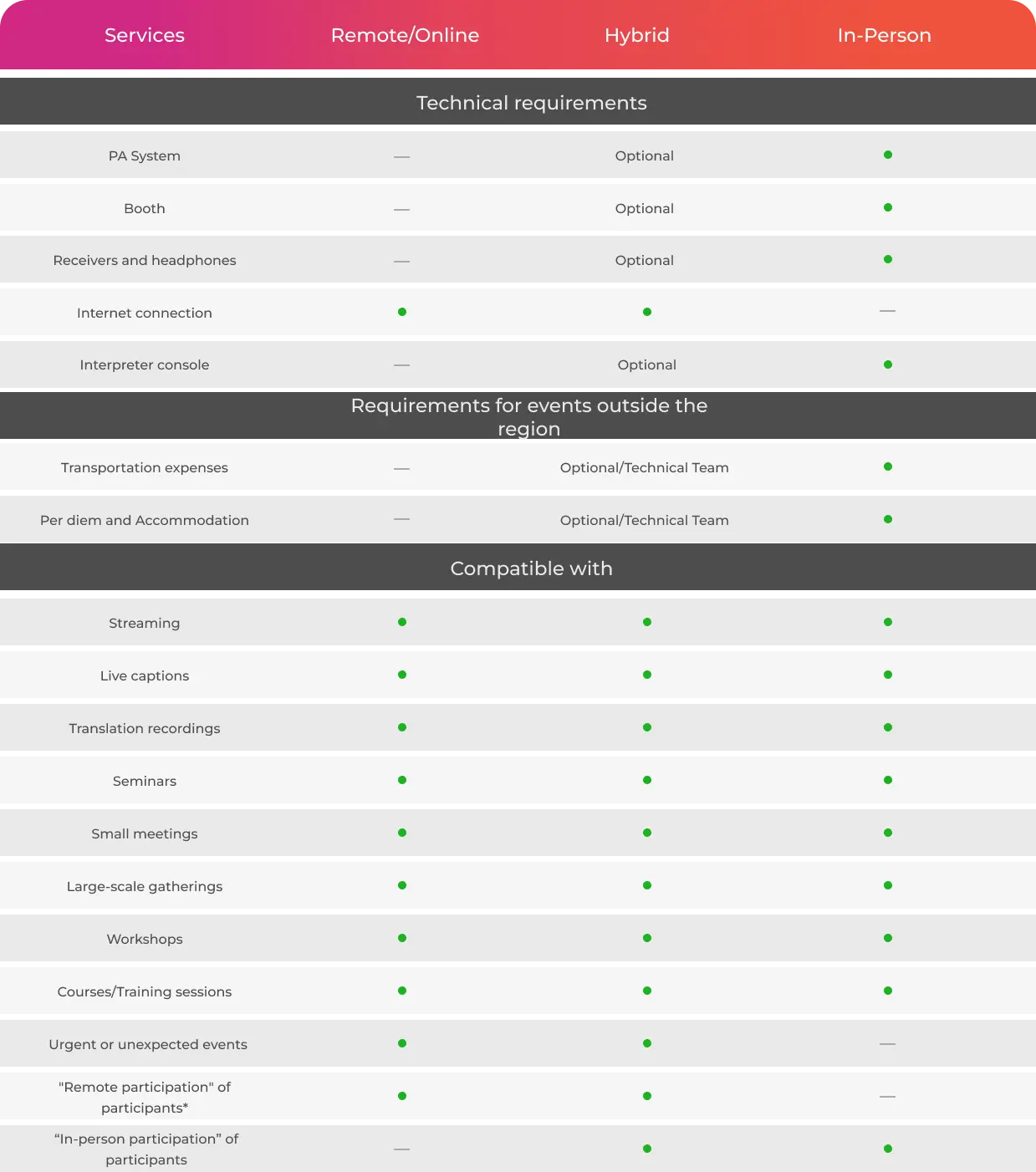
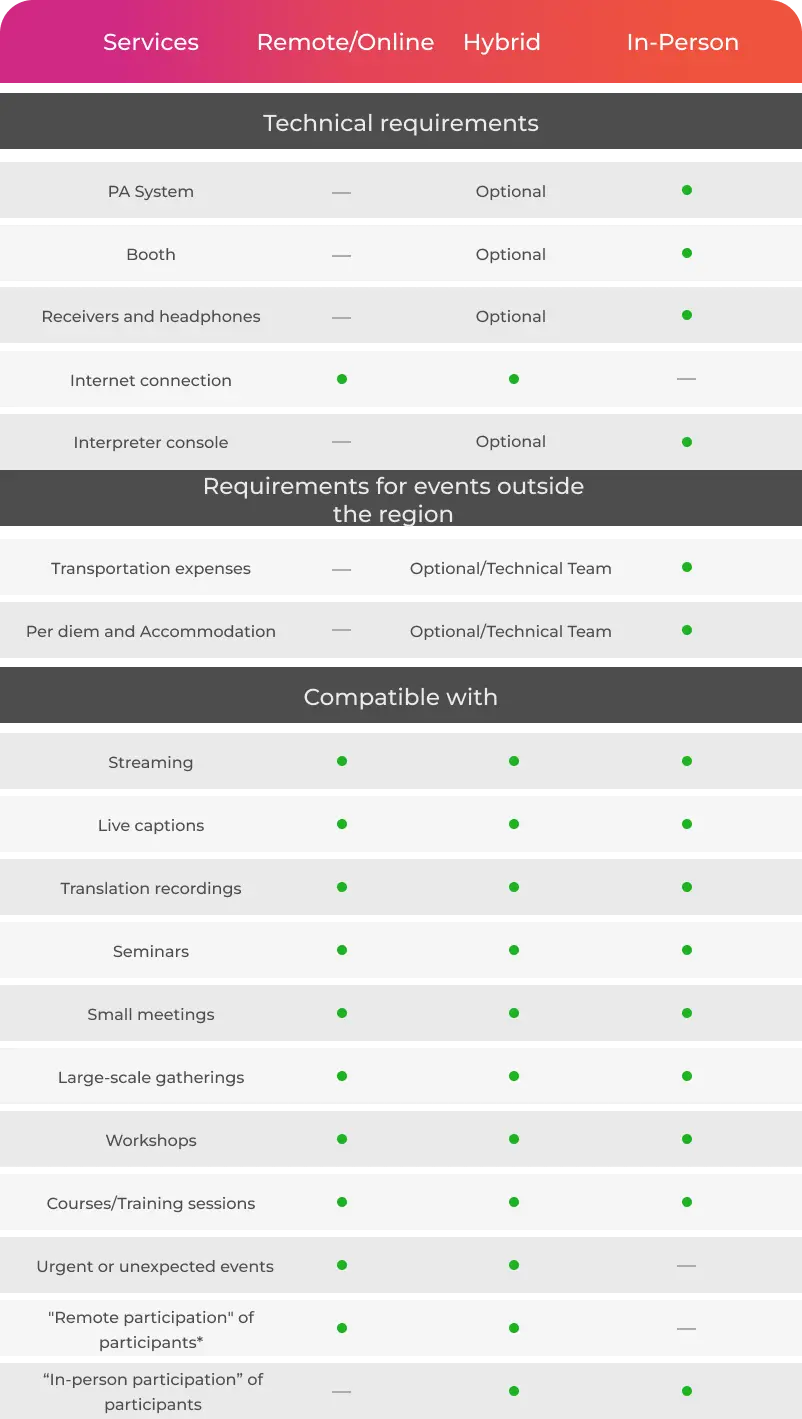
*"Remote participation" and "in-person participation": By this, we refer to the option, in the event of any eventuality, for a participant or speaker to switch from being in-person to remote, or vice versa.
As you can see, in the hybrid mode there are many optional technical requirements. This means they are not necessary, but you can add them if you wish, depending on what you want to achieve with your event. Let us know what you need, and we will happily guide you to your best option 😊
Frequently asked questions
Simultaneous interpretation is real-time oral translation: while the speaker is talking, the interpreter reproduces the message in another language with a ~1 second delay, achieving smooth communication without pauses.
A standard setup includes soundproof booths, digital consoles for interpreters, headset microphones, infrared or Radio Frequency transmitters, receivers with headphones for the audience, and a microphone system for speakers if the venue does not provide it.
- Simultaneous Interpretation: it is translated instantly, ideal for conferences and events with limited time.
- Consecutive Interpretation: the speaker pauses; it is used in press conferences or brief meetings.
- Written translation: conversion of documents, not of live speeches.
The price varies depending on languages, number of booths, days of use, and whether the event is in-person, hybrid, or remote. Virtual rooms (Zoom, Webex, etc.) only require the platform and reduce costs; portable equipment is charged per day and by the number of receivers. Transportation and installation are usually included in the final quote.
RSI is carried out through cloud platforms: interpreters work from remote booths and listeners receive the audio on their devices. It is ideal for webinars, hybrid events, or when the logistics of physical booths are costly.
AIIC (Asociación internacional de interpreters de conferencias) recomienda dos intérpretes por cabina y por idioma para eventos de más de 30 minutos; se turnan cada 20-30 min para mantener la precisión y proteger la voz. Eventos cortos (< 90 min) pueden admitir un solo profesional, pero lo óptimo es siempre el trabajo en pareja.
The booths provide sound insulation, a direct view of the stage, and comply with ISO 4043 standards; they ensure audio quality and the concentration of the interpreter. Portable equipment or whispering is useful for visits or small groups, but not for conferences with multiple languages.
Zoom and other virtual rooms support multilingual audio channels; simply activate the "Interpretation" option and assign each interpreter their channel. For broadcasts to streaming platforms like YouTube/RTMP, audio sources are combined and separate links are generated by language.
At Remote Translations, we use digital systems and headsets with closed signals to avoid interference and audio leaks. The technical team monitors levels in real time. We are also willing to sign confidentiality agreements, which extend to the interpreters and all staff.
AI is advancing, but it still does not match the cultural sensitivity, nuance reading, and confidentiality that certified professionals offer. Even in 2025, high-level organizations and companies continue to rely on human interpreters to ensure quality and security.
Google Meet has just launched a real-time voice translation feature powered by AI. It is perfect for 1-on-1 video calls or small teams and, for now, only covers a handful of languages. For multilingual conferences, technical speeches, or when cultural accuracy is critical, you will still need professional interpreters and dedicated equipment.
